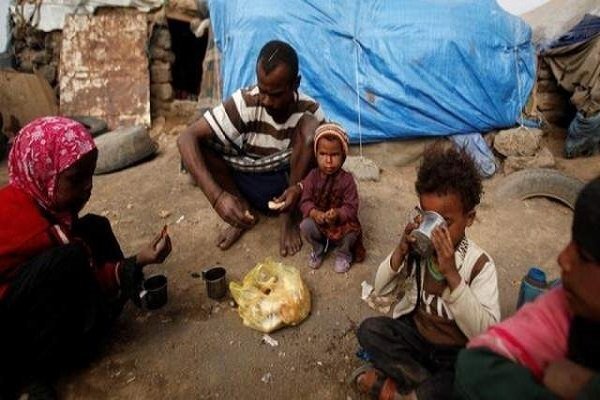Iran and Oman Poised to Set New Record in Bilateral Trade
TEHRAN (Iran News) Jamal Razaghi Jahromi, President of the Iran–Oman Joint Chamber of Commerce, emphasized in an interview with Iran Chamber Online that despite existing structural and logistical barriers, the positive trajectory of trade between the two countries is expected to continue in the second half of the year, potentially setting a new record in bilateral exchanges.
According to Razaghi, in the first five months of 2025 (Iranian year 1404), trade between Iran and Oman increased by 11 percent compared to the same period last year. Iran’s exports to Oman, which grew by 16 percent, were the main driver of this growth.
He noted that non-oil exports from Iran to Oman amounted to $780 million, while imports from Oman reached $373 million, resulting in a total trade volume of $1.153 billion. During the same period in 2024, exports had stood at $675 million, and imports at $363 million, for a total of $1.038 billion.
Razaghi highlighted that this consistent upward trend reflects improvements in logistics, diversification of export products, and Oman’s growing role as a regional trade hub.
The head of the Joint Chamber outlined several key factors behind the growing trade volume. These include the expansion of port infrastructure—notably at Chabahar (Iran), Sohar, and Duqm (Oman)—and the establishment of new maritime shipping routes between the two nations. Such developments have reduced transportation costs and simplified export logistics for Iranian businesses.
Additionally, Iran has broadened the range of goods it exports to Oman, with petrochemical products, steel, cement, agricultural goods, food products, and fresh produce being the top-performing sectors.
Razaghi also pointed to Oman’s strategic positioning as a re-export hub, meaning that part of the goods imported from Iran are subsequently exported to markets in Africa, India, and the Persian Gulf. This re-export activity has further deepened the trade partnership between the two nations.
Moreover, Oman’s “Vision 2040” policy, which emphasizes diversification of trade partners and reducing dependence on a few key suppliers, has opened new opportunities for Iran.
Despite the promising outlook, Razaghi acknowledged that Iranian exporters face several challenges in trading with Oman. Beyond the impact of sanctions and banking restrictions, one of the main obstacles remains intense competition from rival exporters—particularly from the United Arab Emirates, Turkey, and India—who enjoy stronger logistical networks and brand presence in Omani markets.
He also highlighted issues related to quality standards and certifications, noting that some Iranian products still require improved packaging, labeling, and compliance with Oman’s GCC/GSO health and safety regulations.
Furthermore, while transportation infrastructure has improved, shipping and container capacity remain limited, leading to occasional delays and higher costs. Many Iranian businesses are also not fully familiar with Oman’s investment and residency regulations, preventing them from establishing a permanent
Despite these obstacles, Razaghi expressed optimism about the outlook for the remainder of the year, noting that Iran currently maintains a trade surplus with Oman. He cautioned, however, that sustained growth depends on several external factors, including global oil and petrochemical prices, competitive pressures from neighboring exporters, and the absence of new logistical or regulatory barriers from Muscat.
Razaghi identified several non-banking challenges that could influence future trade, particularly fluctuating shipping costs and irregular maritime schedules amid global shipping disruptions. He also emphasized the importance of exporters adhering to Oman’s import registration systems—such as the “Bayan” customs platform—and obtaining necessary approvals from Omani food and veterinary authorities for agricultural and food items.
He noted that a significant portion of Iran’s imports from Oman consist of re-exported goods, making them vulnerable to global price volatility and changes in third-country regulations.
On the positive side, Razaghi pointed to the signing of 18 cooperation agreements during an Iranian delegation’s official visit to Muscat in June 2025. These agreements included discussions on preferential trade arrangements and tariff reductions, which could lower both tariff and non-tariff barriers and strengthen bilateral economic cooperation.
He added that the growing collaboration between the chambers of commerce of both countries, along with enhanced private sector ties, would further accelerate trade expansion.
According to Razaghi, the trade composition between the two countries is largely complementary. Iran’s main exports to Oman include livestock, agricultural goods, petrochemical and petroleum products, food items, and raw agricultural materials, while its main imports consist of animal feed corn, sunflower oil, and various industrial and mineral products—all of which are in high demand in regional markets.
Moreover, Oman’s role as Iran’s second-largest re-export destination after the UAE ensures that even if direct exports fluctuate, overall trade through re-export channels remains robust.
In conclusion, Razaghi forecast that the total volume of trade between Iran and Oman will surpass $2.5 billion by the end of 2025, marking a significant increase from last year’s levels. “Despite the structural and logistical challenges,” he said, “the overall trajectory remains positive, and with continued cooperation, Iran and Oman are poised to set a new record in bilateral trade.”
- source : IRAN NEWS ECONOMIC DESK






























